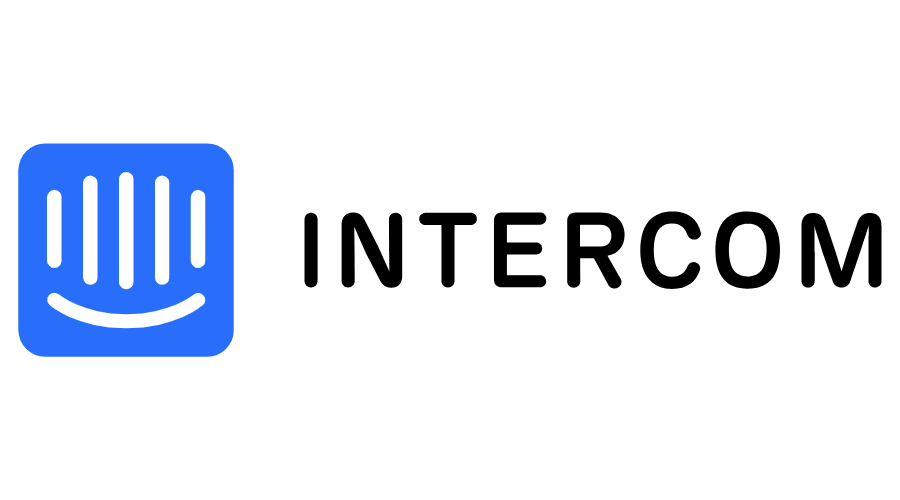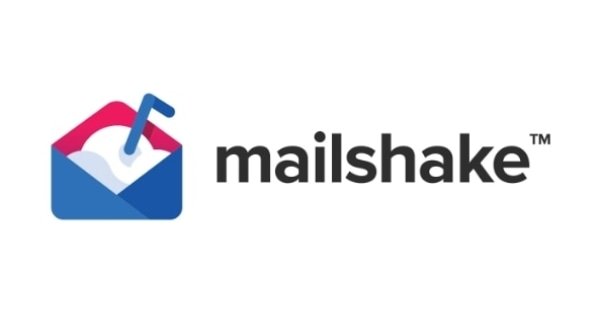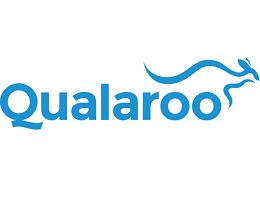Many successful small business owners are always looking for new ways to grow their businesses.
However, business growth doesn’t happen overnight.
It’s a long term process that involves gaining access to a steady stream of sales leads.
If you have a good lead generation system in place, then it’ll be much easier for you to attract more customers and significantly increase your conversion rates.
A lead is a person that has an interest in the products and services that you’re selling.
If your business sells to other businesses (B2B), then your sales leads must reflect on this, meaning that you’ll have to develop a B2B lead generation strategy.
Everyone knows that more customers mean more sales.
So, business owners must know how to generate more sales leads to grow their small businesses.
In this step-by-step guide, you’ll learn how to create a system to help you identify sales leads and turn them into loyal customers.
What is Lead Generation?

Lead generation is a marketing tactic used to initiate customer interest.
Leads can be created for purposes like e-newsletter acquisitions, list building, or sales.
It describes the process of stimulating and capturing interest in a product or service to increase sales pipeline.
It often uses digital channels, including PPC ads, newsletters, events, social techniques, and more.
Businesses need lead generation techniques to attract new customers.
The only way for a business to survive is for them to attract as many customers as possible.
Why is Lead Generation Important?

Today, businesses are heavily dependent on lead generation.
It enables their websites to generate more traffic, which leads to further conversion of leads into customers.
High quality leads increase conversion rates, helping businesses to gain more profits in the process.
It’s crucial to have a lead generation strategy to promote business growth and expansion.
Step 1: Identify Your Target Audience

The first step in generating sales leads is identifying your target audience.
You must understand who your customers are so that you can reach them on a deeper level.
Ask yourself:
- Who is my target audience?
- What do they like and dislike?
- How much money do they make?
- How old are they?
- What is their lifestyle like?
- What are their personality traits?
Once you know who your audience is and what their behaviors are, then you can move forward to creating an in-depth, comprehensive marketing plan.
Step 2: Establish Marketing Campaign Goals

Setting realistic marketing campaign goals gives you something to look forward to.
Generating the most leads possible isn’t a goal – it’s a part of the process needed to accomplish your goals.
Use a tracking and measurement system to determine your number of page visits, leads, bounce rates, and conversion rates.
This will help you to come up with a particular timetable for accomplishing your goals.
Determine the value of your average customer, allowing you to figure out what you may need from your marketing campaign to reach your goals.
From there, calculate how many sales leads you’re converting on average.
Use industry benchmarks to estimate your conversion rates, as well as how many page visitors you’ll need to generate to reach your goals.
Once you’ve done this, it’s time to strategize.
Step 3: Create A Marketing Strategy

To generate the type of leads that you want, you must create a promotional marketing strategy.
Marketing strategies are created to identify the most effective business growth methods.
Some marketing ideas include Search Engine Optimization, blog posts, social media content, industry events, pay-per-click PPC ads, and of course, website optimization.
Remember to choose your promotional marketing strategy wisely.
Your plan will outline the series of events leading up to your lead generation results.
The more you strategize, the better your outcome will be.
So, be mindful of this process.
Organize networking events where you can meet people that can give you some insight into growing your small business.
Who knows?
You may even meet some potential clients at one of these events.
Step 4: Develop A Sales Funnel
 The first part of the sales funnel process involves “funneling” all prospective customers to a landing page or a standard form.
The first part of the sales funnel process involves “funneling” all prospective customers to a landing page or a standard form.
These pages should encourage them to share their contact information.
You can offer an incentive for this information, generally in return for a gift, coupon, promotional discount, or another value-added incentive.
Once you’ve reached this point, you should have a customer relationship management (CRM) system to help you keep track of your potential customers.
Step 5: Build Relationships Through Email

An email newsletter allows you to stay in contact with your prospects.
Cultivating relationships helps you to turn leads into loyal customers.
One of the most effective ways to create consistent communication with your customers is through an email newsletter.
In step 4 when we spoke about creating a sales funnel, you should have gathered email addresses from those who completed a standard form.
Add those email addresses to your roster of contacts and begin sending out weekly or monthly newsletters.
These emails will keep customers up-to-date on the latest business news, as well as coupons, discounts, promotional offers, and events.
Remember to always be friendly, providing a nice greeting or message of gratitude for their loyalty.
Building relationships with your customers will make them feel valued and appreciated, encouraging them to continue doing business with you.
Step 6: Engage Your Audience

Social media is the “it” place of the century, where infinite opportunities are possible for small businesses.
Create a Facebook page, LinkedIn page, Twitter profile, Instagram profile, or YouTube account to attract and engage your audience.
Funnel your prospects through this process to convert them into leads.
Use social media to talk openly to your audience.
Find out what they need and want.
Create content that will incline your audience to trust your brand.
Building trust between you and your audience is key.
And always remember, lead generation is a long term and continuous process.
Get an efficient social media marketing strategy in place to generate sales leads.
Streamline your lead generation process to increase business growth opportunities.
Step 7: Optimize Your Website

Your website is the center point of your business.
It’s where your customers can discover who you are, what you’re about, what you offer, and how to find you.
Your website should be engaging, providing clickable CTA’s so that your customer can know what to do next throughout their navigation process.
Make sure that your website is responsive to all screen sizes.
This way, anyone using a smartphone, tablet, or laptop can navigate through your website easily.
Also, having a responsive website is a good way to boost your SEO.
Perform a site audit to ensure that there aren’t any errors.
Once you’ve performed this audit and identified any errors, fix them to ensure that your website is error-free and optimized.
Step 8: Create Compelling Content

Content is a way of storytelling.
Without content, your website might as well not exist.
Make sure that your website, social media page, email newsletters, press releases, and ad campaigns all have quality content.
Having quality content means having high ranking keywords incorporated throughout the text.
These keywords are the most important aspect of your content strategy.
Google favors content that has relevant, high ranking keywords built-in.
That way, whenever someone searches for a company like yours, your business name will appear at the top of the search results page.
Being at the top of the search results means that you’re doing quite well.
Over 90% of visitors will only click on business website links that appear on the first page of the search results.
So, unless you’re on the first page, most visitors will not know that you exist.
This means that you must take action.
To be at the top, you need top-quality content.
Consider hiring a professional content writer to complete this task.
They should write the website content, blogs, social media posts, newsletters, press releases, and marketing ad campaigns.
Make sure that the content is engaging.
You should hook in the reader in the first few seconds.
Then, once you’ve got them intrigued to learn more, provide a clearly stated CTA for them to take the next step in the purchasing process.
Step 9: Create Ads
 Google AdWords and Facebook ads are a great way to drive more web traffic.
Google AdWords and Facebook ads are a great way to drive more web traffic.
Google ads are clickable ads that appear in Google’s search results.
Advertisers pay for these clicks, making it a pay-per-click (PPC) ad.
But, you know what they say – you have to spend money to make money.
These ads are an investment, allowing you to generate more leads and increase conversion rates.
Make sure that your ads are keyword-focused.
Utilize relevant, high ranking keywords in your ad campaigns.
Monitor, track, and measure these ad performances to weed out the poorly performing ads from the well-performing ones.
This will save you more money and help you to focus on the ads that will actually make you money in the long run.
Build upon the ads that are performing well so that you can gain more traction.
Delete the non-performing ads and replace them with better ones.
It’s good to have as many ads as possible to increase web traffic.
Use these ads to display brief advertisements, product listings, service offerings, videos, social media profiles, and mobile app installs within the Google ad network.
Step 10: Invest in Lead Generation Software

Just like any job, lead generation requires the right tools.
You can gain a huge advantage by utilizing web-based lead generation tools.
These tools help you to acquire more sales leads than you would organically, giving you the competitive edge that you need to get ahead.
Choose from the following:
- Email marketing tools
- Email address finders
- CRM tools
- Sales tools
- Prospecting and outreach tools
- Communication tools
- Advertising tools
Any of these can help you acquire more leads in a shorter period.
This is the most cost-efficient way to get the most out of your lead generation process.
Here are some examples of lead generation tools to choose from:
HubSpot Marketing

HubSpot Marketing is a full suite lead generation tool that’s easy to capture, store, and nurture leads.
Using HubSpot Marketing allows you to integrate your CRM, email tools, or customer data platforms.
This all-in-one system is the ideal solution for optimizing your lead generation efforts.
Intercom

Intercom is a great tool used to accomplish marketing, sales, and support in an all-in-one environment.
Use their on-site messaging features to engage with on-site visitors and collect their important information.
You can analyze this information and create message triggers to help with retention, onboarding, and support.
They even have an integrated help desk to answer any questions and provide technical support for customers.
Mailshake

Mailshake is a great tool for email outreach.
It helps you personalize, optimize, and automate your cold emails.
This tool is particularly useful for sales development, content promotion, fundraising, public relations, link building, and of course, lead generation.
With Mailshake, you can even take advantage of their ready-made templates so that you don’t have to create emails from scratch (although, that is an option too).
Qualaroo

Qualaroo is an on-site polling tool used to collect user feedback.
It can also be used to improve your product and marketing experience, collecting leads along the way.
This tool is ideal for those looking to gain conversion optimization and user experience insights.
This is especially useful if you want to learn how customers perceive you online.
HotJar
 HotJar is a customer experience analytics platform used for conversion optimization research.
HotJar is a customer experience analytics platform used for conversion optimization research.
Like Qualaroo, HotJar has on-site polls that double up as conversion points.
This allows you the opportunity to collect valuable customer feedback, as well as customer email addresses.
Hull.io
 Hull.io is a customer data platform that allows you to collect data from different marketing sources.
Hull.io is a customer data platform that allows you to collect data from different marketing sources.
It helps to push the data out of your marketing tools so that you can personalize experienced in real-time.
Collecting data and delivering experiences can help you to personalize your lead generation campaigns.
Hull.io makes this possible.
Make More Lead Generation Moves

If you have a small business, or you’ve been assigned the task of generating leads for other small businesses, then there are a few things to keep in mind.
Some companies choose to increase their budget on lead generation tools and software.
Other companies outspend their competitors in terms of ad campaigns and public relations events.
But above all else, the most successful companies choose to outsmart the competition rather than outspend them.
These companies operate by a simple formula:
Traffic x Conversion Rate = Leads
This simple, somewhat grade-school like math equation speaks volumes to the success of small businesses everywhere.
Small business lead generation begins by giving people a reason to visit your website.
There are many ways to accomplish this, such as the 10 steps mentioned above.
Remember these basic steps and you’ll be in good shape.
Here are a few other things that you can do to optimize your lead generation.
Perform Basic Local SEO

To ensure that your basic local SEO standards are up to par, you can:
- Claim and optimize your free Google My Business directory listing
- Perform basic SEO across your website’s pages using descriptive title tags
- Optimize each web page with meta descriptions
- Encourage customers to post reviews about your business
- Claim local business listings on online business directories
Run A Contest or Giveaway

A contest or giveaway can generate tons of email and social media leads.
Brands offer a prize in exchange for participants to refer friends, like your social media profiles, and share relevant content.
You can get creative with this part.
Choose a prize or reward of some kind to incentivize customers.
Remember to create a “thank you” message to those who participate.
Invest in New Technology

New technological advancements set the trend in our markets.
For instance, smartphones are setting all kinds of trends all over the world.
Most people access their mail or browse websites using their smartphones or tablets.
Invest in making your marketing efforts mobile-friendly.
Make sure that your website is responsive to all mobile devices.
This will allow you to reach the maximum amount of customers.
Keep an eye on emerging technologies and digital channels so that you can get more sales leads.
Develop More Informational Content

High-quality content can be an enormous asset to your business.
It attracts more web traffic, thus, attracting more customers in the process.
Include videos, infographics, and images to increase share counts and engagement.
Make sure that your social media posts include informational content.
Include business descriptions, services, hours of operation, addresses, phone numbers, events, promotions, coupons & discounts, and CTA’s.
Include engaging graphics and real photos in your posts.
People respond better to real pictures rather than stock images.
Don’t forget to include any relevant COVID-19 related safety protocols or announcements to help keep customers informed and at ease.
Gain More Social Media Traction

Take full advantage of all your social media profiles.
Facebook, Twitter, LinkedIn, and Instagram should be your best friends.
Don’t neglect your profiles, ever.
Post every day at specific times each day.
Provide links to your website in your social media posts.
Include engaging graphics, images, and video content.
Don’t forget to include relevant hashtags.
Research what your competitors are doing, as well.
Performing a competitive analysis can help you get a competitive edge.
You don’t want to copy word-for-word what your competitors are doing.
Just observe, report, analyze, and strategize your next move.
The goal is to stay ahead of the competition.
You can do this by making sure that your social media profiles stand out.
Engaging more customers means gaining more leads.
Keeping up with social trends can also significantly boost your SEO.
So, make sure that you’re updating your social media feeds.
Use information content mixed with engaging content.
Draw in your audience with games, quizzes, and polls.
Provide links to your website and other relevant websites to keep readers interested.
Analyze Your Data

Measuring, monitoring, and tracking your performance is crucial.
You must understand which ads and marketing efforts are working in your favor, as well as which aren’t.
Once you understand this, you can make the right moves to optimize your lead generations and maximize your ROI.
Google Analytics is a great tracking tool used to monitor your performance.
It’s easy to use and accurate.
Many companies rely on Google Analytics to measure their marketing effectiveness.
Utilize these tools so that you can better understand how to stay on track.
From there, you can decide whether or not to stretch your marketing budget to cater to your needs.
Whether you want to invest in more SEO, PPC ads, or other promotional materials, you can do so once you’ve seen the numbers up close and personal.
Don’t Underestimate Blogs

Blogs are not only meant for improving your SEO.
Blogs are a great way to engage with customers and attract more leads.
Business blogs help establish you as an authority in your industry.
They give people an inside look at your workplace culture, as well as boosting your SEO.
Craft your posts in a way that educates your customers.
Place yourself in a position where you can become the go-to resource in your target audience’s time of need.
The more blogs that you publish, the more favorably search engines will look at your website.
This kind of recognition is exactly what you need to get more leads.
Pull them in, capture their attention, call them to action, and convert them into loyal customers.
So, don’t underestimate the power of blogging.
It can make or break your business in the long run.
Invest part of your marketing budget on a professional content writer.
They will craft the perfect blogs that will help you attract more customers.
The Bottom Line

As we’ve mentioned before, the bottom line is this.
You need leads to maximize your ROI.
Investments are not just about money.
They’re also about time, energy, and focus.
You can always gain back money that you’ve lost.
However, you cannot get back lost time.
So, you must invest your time wisely.
Follow the steps relayed above and you’ll be on your way towards a successful future.



